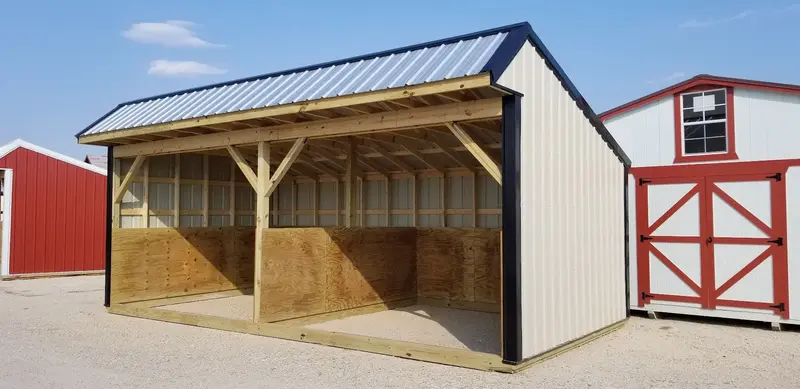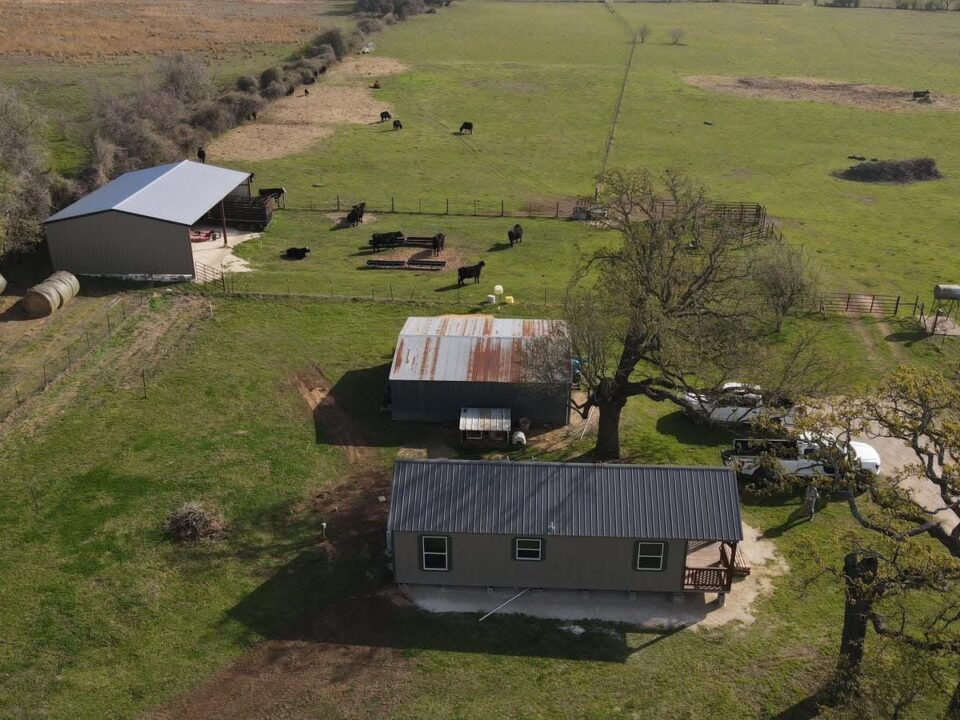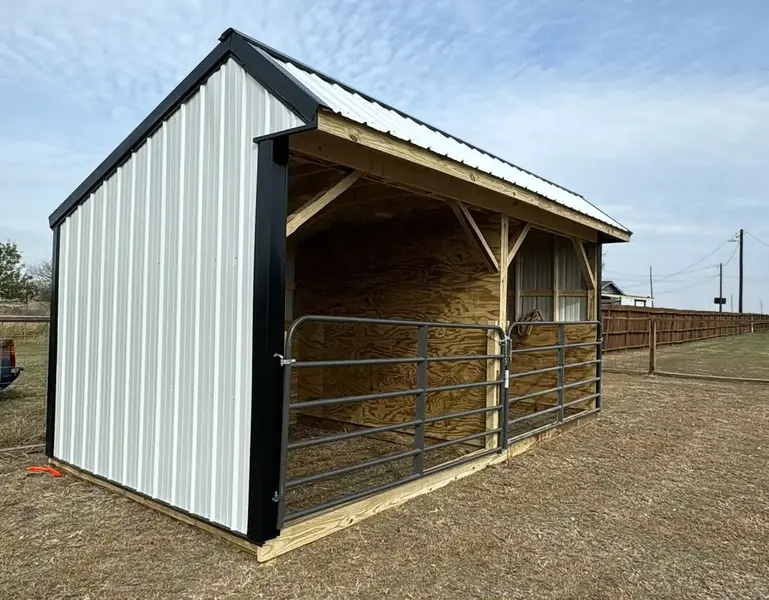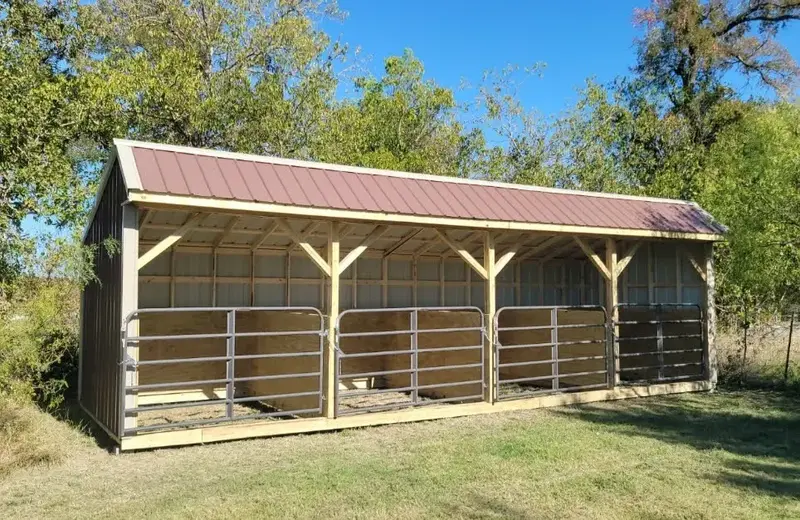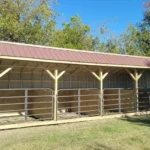
Multi-Species Shelter Tips: Housing Different Animals Together
July 23, 2025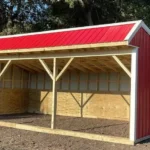
Barn Alternatives for Livestock: Why Loafing Sheds Work
July 25, 2025Feeding Troughs for Loafing Sheds: Getting Your Setup Right
If you’ve got a loafing shed, you’re already ahead of the game. You’re keeping your animals comfortable. But here’s the thing – having the right feeding troughs inside that shed makes all the difference. The right setup saves you time and money. It keeps your livestock healthier and happier too.
At Wolf Valley Buildings, we’ve seen every kind of feeding trough setup you can imagine. We’ve built hundreds of loafing sheds over the years. Some feeding trough setups work great. Others… well, let’s just say we’ve learned what not to do! Let’s talk about what actually works when it comes to feeding troughs in loafing sheds.
Why Feeding Troughs Inside Loafing Sheds Make Perfect Sense 🎯
Think about it – your animals already come into the loafing shed to get out of the weather. So why not feed them there too? Troughs positioned inside loafing sheds keep your feed dry. They reduce waste and make your daily chores way easier. No more trudging through mud to fill outdoor feeders. No more watching expensive feed blow away in the wind.
The beauty of feeding troughs in loafing sheds is simple. Your animals can eat comfortably regardless of what Mother Nature’s throwing at them. Rain, snow, blazing sun – doesn’t matter. They’ve got a comfortable spot to eat with overhead protection. Plus, when feeding troughs are protected inside loafing sheds, the feed stays fresher longer. You’re not constantly cleaning out soggy, spoiled feed.
They work especially well in loafing sheds because you can design the whole setup to work together. They become part of the overall flow of the space. This makes it easier for animals to move around. It also reduces competition at feeding time.
Choosing the Right Feeding Troughs for Your Setup 🛠️
Not all feeding troughs are created equal. This is especially true when you’re putting them inside loafing sheds. You want feeding troughs that can handle daily use. They need to be easy to clean. They should fit well within your loafing shed layout.
Concrete troughs are incredibly durable. They work great in loafing sheds. They’re heavy enough that animals can’t push them around. They last basically forever. The downside? They’re expensive upfront. They’re tough to move if you want to reconfigure your loafing shed later.
Poly feeding troughs are lighter and cheaper. They’re easier to move around inside your loafing shed. They come in lots of different sizes and shapes. You can find feeding troughs that fit your specific loafing shed dimensions. Just make sure you get heavy-duty ones that won’t crack in cold weather.
Metal ones offer a good middle ground. Galvanized steel ones are especially good. They’re durable enough for daily use in loafing sheds. They’re reasonably priced. You can often find used ones that work perfectly fine.
Sizing Your Feeding Troughs Right 📏
Getting the size right is crucial in loafing sheds. Space might be limited. You want enough feeding space so animals aren’t competing aggressively. But you don’t want feeding troughs taking up so much room that your loafing shed feels cramped.
For cattle, plan on about 24-30 inches of feeding space per animal. If you’re using your loafing shed for horses, they need similar space. But they might be pickier about sharing. Sheep and goats can get by with 12-18 inches each. They’re more likely to climb into the troughs if you’re not careful!
Length of feeding troughs in loafing sheds depends on several factors. How many animals you’re feeding matters. How your loafing shed is laid out matters too. Longer ones can accommodate more animals. But they might be harder to clean and maintain. Shorter ones give you more flexibility in arranging your loafing shed space.
Smart Placement Inside Your Loafing Shed 📍
Where you put the troughs inside your loafing shed matters more than you might think. You want easy access for filling and cleaning. But you also need to consider animal traffic flow. You need to prevent feed contamination too.
Most folks find that placing them along one wall of the loafing shed works well. This keeps the feeding area organized. It leaves the center of the loafing shed open for animals to move around comfortably. Make sure there’s enough clearance behind the feeding troughs. You need to get in there for cleaning and maintenance.
If your loafing shed is big enough, consider putting feeding troughs away from the main entrance. This prevents feed from getting scattered by animals coming and going. It encourages animals to move further into the loafing shed. They’re better protected from weather there.
Getting the height right prevents neck strain for your animals. It also reduces feed waste. Most work best when they’re positioned properly. Animals should be able to eat comfortably with their heads in a natural position. Too high and smaller animals can’t reach. Too low and feed gets contaminated more easily.
Feed Types and Feeding Trough Compatibility 🌾
Different feeds work better with different types of feeding troughs. This is especially true inside loafing sheds where moisture control matters. Hay feeding requires different feeding setups than grain or supplements.
Grain and supplement feeding troughs in loafing sheds should have smooth sides. This makes cleaning easier. Consider dividers if you’re feeding different animals or different rations. Some may come with removable dividers. These give you flexibility as your needs change.
Maintenance and Cleaning Your Feeding Troughs 🧽
Keeping feeding areas clean inside loafing sheds is easier than outdoor feeding. But it still requires regular attention. Weekly cleaning prevents feed buildup. It reduces the risk of mold or bacterial problems that can make animals sick.
Most can be cleaned with a stiff brush and water. If you’re dealing with stuck-on feed or algae buildup, a mild bleach solution works well. Just make sure to rinse thoroughly before refilling with feed.
Position them in your loafing shed so you can easily access them with cleaning equipment. If you can drive a small tractor or UTV into your loafing shed for cleaning, that’s even better. It makes maintaining multiple feeding troughs much faster.
Making It Work for Your Operation 💪
The best feeding setup for your loafing shed depends on your specific situation. Your animals matter. Your feeding routine matters. Start with basic, quality feeding troughs. Add features as you figure out what works best for your situation.
Internal Links:
Why Wolf Valley Animal Shelters Are Built to Last
Best Animal Shelter Flooring for Harsh Climates | 2025 Guide
Predator-Proofing Your Shelter: How to Keep Your Animals Safe
External Link:
https://www.extension.iastate.edu/smallfarms/feeding-systems-livestock

